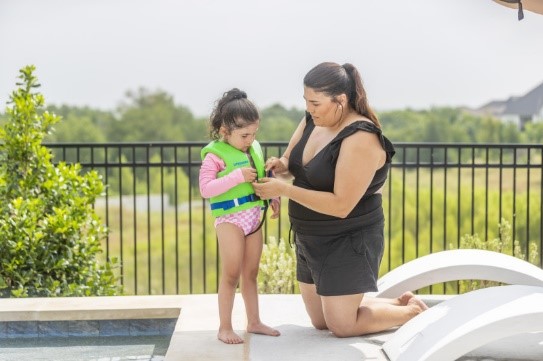7 Questions Answered About Pneumonia
Pediatricians on symptoms, treatment and when it’s an emergency

Along with the flu, we are seeing a lot of pneumonia in our Emergency Department and in our pediatrician’s offices.
These visits are most commonly a secondary infection with the flu and RSV.
“Actually, pneumonia has been what kills many people with the flu,” Audrey Rogers, M.D., a pediatrician at Forest Park, said. “The flu weakens your immune system and allows the bacteria to take hold and cause an infection in the air sacks of the lungs. That is what a classic bacterial pneumonia causes.”
Viruses cause inflammation of the air tubes more than the air sacks. But the bacteria cause a lot of damage and if it destroys enough of the air sacks it can be fatal. If your immune system is already weak it can be much worse. Infants, the elderly and immunosuppressed people are especially at risk if they have pneumonia. Classic pneumonia is usually diagnosed with a chest X-ray.
Want even more information about the pneumonia? Keep reading this Q&A with Bradley Mercer, M.D., also a pediatrician at Cook Children’s Forest Park location.
1. What is pneumonia?
Pneumonia is an infection of the lungs. Bacteria normally present in the upper respiratory tract (nose, sinuses, mouth) can get into the lungs when there is a disruption in the normal immune system such as during a cold or influenza infection.
2. What are the symptoms?
Cough with lots of mucus production, fever, sometimes difficulty breathing and chest pain.
Most susceptible are the very young and the very old, and those with other underlying respiratory, cardiac conditions or a weakened immune system due to a chronic medical condition or medication or smoking.
3. How do you treat pneumonia?
Treatment is usually fluids, rest, antibiotics and sometimes breathing treatments. If it is a severe case, the treatment may include IV fluids, IV antibiotics and oxygen. Sometimes when really severe, chest tubes to drain fluid collections or in cases of respiratory failure, artificial ventilators.
4. How does pneumonia begin?
It usually starts with an illness such as a respiratory virus, which disrupts the body’s normal infection fighting mechanisms that prevent bacteria from traveling to the lungs.
5. How often do you see children with pneumonia?
We see pneumonia several times per month in children. Thankfully it’s usually mild and not life-threatening and is usually treated with supportive care and oral antibiotics. It can be uncomfortable and take a while to recover, but most kids recover fully within 1-2 weeks without any long-term consequences.
6. When will a child need to be admitted to the hospital?
Children needing oxygen will usually need to be admitted to the hospital. Most pneumonias aren’t contagious, but the viral illnesses that set them up for pneumonia can be. Use typical hygiene to prevent transmission.
7. When is it an emergency?
Go to the ED if your child has difficulty breathing, appears in distress, color is poor or is in pain. Call your doctor first thing in the morning if your child has symptoms of pneumonia, but is in no distress. Call any time if you’re not sure and a nurse can help you decide the appropriate course of action in the middle of the night.
Get your child the flu shot. It may not provide perfect protection, but it can reduce the risk of severe complications from influenza such as pneumonia.
To learn more about this topic read:
Daughter’s Pneumonia Gives Physician New Perspective as a Patient’s Dad
Get to know Cook Children’s Forest Park
Dr. Rogers and Dr. Mercer are both pediatricians at Cook Children’s Pediatrics (Forest Park). Cook Children’s pediatricians in Fort Worth (Forest Park) are here to help you with well-child visits, vaccines, illnesses, behavior problems, learning disorders or answer questions all parents have. If your child has a chronic illness, we’re here to provide you with a medical home and make sure he or she gets the care they need. Click here to learn more about the practice and to meet our team.


